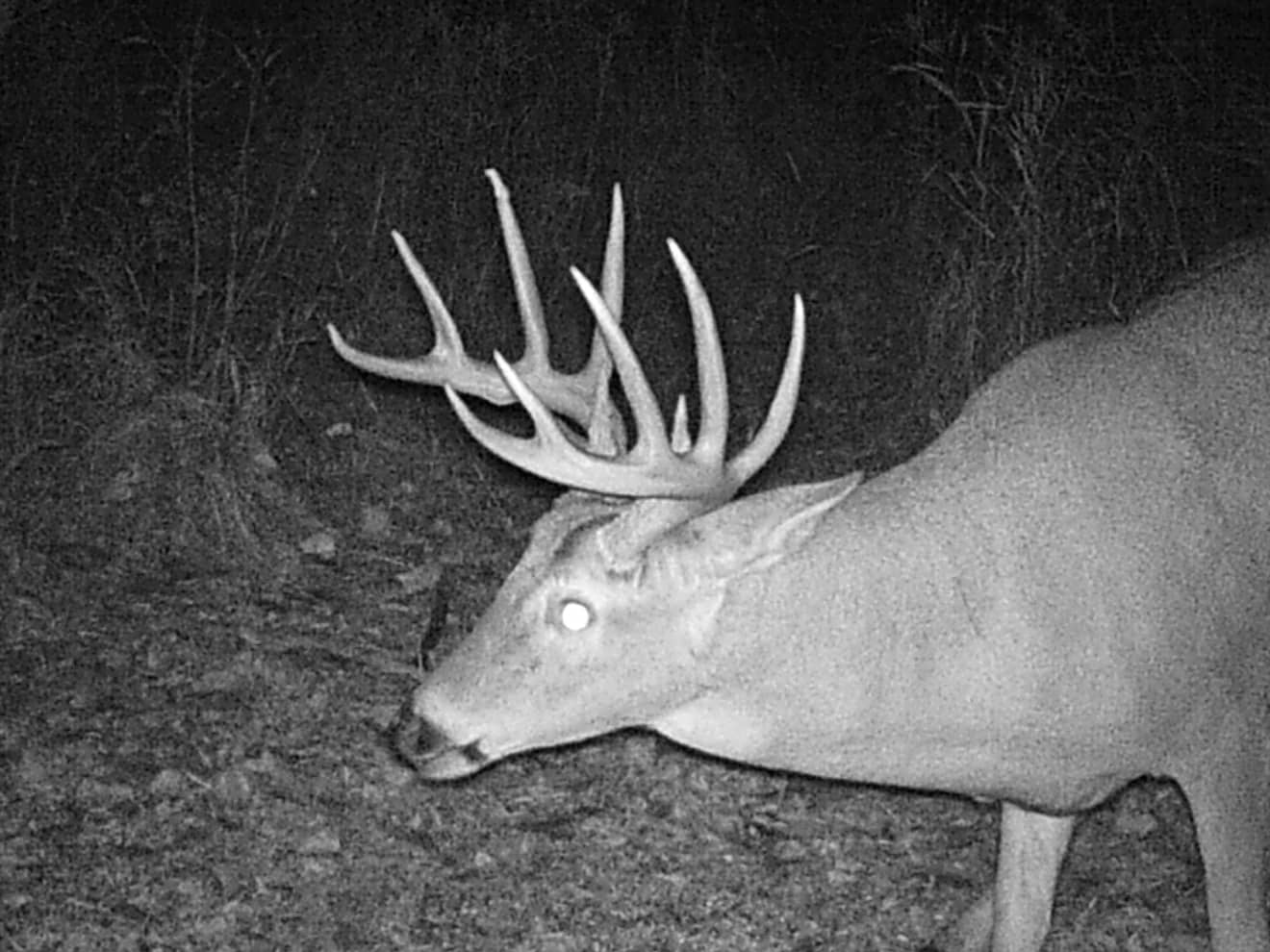
Still Holding. Shed hunters should delay their efforts in searching for fallen antlers to help avoid stressing deer out in late winter. Additionally, many bucks may maintain their headgear as late as early March, depending on their body condition and how well they’ve made it through the season. DEO Photo.
By John Bradley
Winter is a challenging season for North Dakota’s wildlife, with below zero temperatures, snowfall, and limited forage. People can help animals by leaving them undisturbed, so they have a better chance to survive the season.
During a normal winter without extremely frigid temperatures, or unusually deep snow, about 90 percent of adult deer and elk survive. But that number can be significantly lower for fawns and calves, which are smaller and less capable of withstanding winter conditions. One way to avoid disturbing wintering wildlife is simply leaving them alone when you’re outdoors. A simple rule of thumb is if your presence or actions cause them to move, you’re too close. What follows are other tips to consider as we enter the back half of winter to help wildlife make it through.
Control Your Dog
Even if your dog isn’t chasing big game animals, its presence may be enough to cause animals to flee and expend unnecessary energy they would not have otherwise used. Big game animals see a dog and think “predator” and the impacts of free-running dogs on wintering game can be substantial. If that isn’t enough to keep your dog close or on a lead, remember it is illegal to allow dogs to chase or harass big game.
Don’t Feed Wintering Big Game
It may seem counterintuitive when there’s limited food available for deer, elk and other animals, but feeding big game can cause big problems, even with good intentions. Regardless of the severity of winter, some animals will naturally perish. That’s an inescapable part of nature, and animals too stressed from winter can die even when food is available.
When big game animals are fed, it can create a long list of unintended problems. They can become habituated to hand outs, change their travel patterns, damage property, create traffic hazards, and attract predators. Congregated animals can also more readily transmit diseases, such as brucellosis and chronic wasting disease and create other problems for themselves and landowners.
Delay your Shed Hunting
Shed hunting too early can have some deadly implications for animals depleted by the rigors of winter survival. Just as antlers begin to drop, deer and elk are often in a situation where they are experiencing a caloric deficit. They are expending more energy than poor winter foraging conditions can replace. So, when shed hunters inadvertently push or spook animals, that energy expenditure might be enough to push deer over the edge.
During tough winters it is especially important for hunters to be thinking about the future of animal populations. Simply put, a trophy-sized buck that dies this winter will not be around the following breeding or hunting season, and he won’t produce another set of sheds next year.
Fawns and calves along with older bucks and bulls suffer the highest winter mortality rates. Older bucks and bulls enter winter worn out from the rut with little in the way of fat reserves. Extreme cold compounds the problems, as it becomes harder to maintain body weight and temperature.
It’s important to give game plenty of space to ensure they have the highest chance to make it to spring, so keep these ideas in mind as we close out February and look forward to warming conditions.
